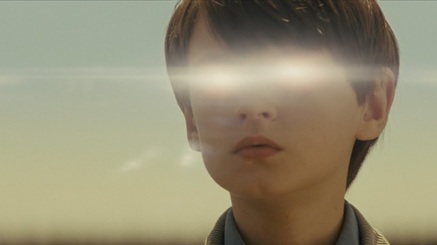 Jeff Nichols' Midnight Special opens in a low-end motel room, where a television news story about a missing boy named Alton Meyer illuminates the otherwise dark room. The news story suggests that Alton Meyer has been kidnapped, having been last scene by his paternal father Roy, traveling across Texas in his old, gray Chevelle. The camera pulls back to reveal that we are in fact in the room of Roy himself, who watches the broadcast while his young son Alton reads in the corner. Alton is dressed peculiarly, wearing swimming googles and thick headphones, secluded in his own little world as he reads a comic book underneath a bedsheet. Roy and Alton are accompanied by Lucas, another middle-aged man who appears to have some type of military training, and after the new-story concludes Roy tells Lucas and his son it's time to go. Jeff Nichols' Midnight Special is a film drenched in mystery and intrigue, slowly revealing its story and circumstances of its characters as its story progresses. Not too long into Midnight Special it becomes clear that Alton is not like most people, being a character who possesses mysterious powers, and as the film progresses it reveals itself as a chase movie, with Alton being pursued both by a cult that thinks he is their savior, as well as the military who wishes to understand the power which this young boy possesses. The narrative of Midnight Special certainly isn't the most original idea, but I'd argue that what Nichols has crafted with Midnight Special is a story of paternity and parenthood, using the tropes and story structure of a science-fiction, road movie to tell a touching story of parental sacrifice. Roy is a character who will do anything to help his son, and much of the story of Midnight Special is about a father having to come to grasps with the idea that his son might not belong on this planet. Without going into too much detail, Roy's story arch is one of paternal sacrifice, a man who essentially sacrifices himself for the betterment of a his son. Hearkening back to some of the more beloved science fiction films, Midnight Special uses a combination of ingenuity, creative storytelling, and craft to create a sense of wonder around its story, exhibiting a moody, supernatural feel that envelopes the entire film. The film never relies on huge set pieces to engage the audience, relying more on well crafted compositions and sound design that help give this relatively small budget science fiction story an epic scale. One such choice is Nichols use of meditative bird eye view compositions throughout Midnight Special, a simple yet effective decision that evokes a sense of voyeurism, as if these characters are being watched by some supernatural force from above. While the heart of the story is this father-son relationship, Midnight Special's thematic ideals center around humanities fear-mongering around anything they can't comprehend. From the government wishing to harness Alton's powers for military applications, to a religious cult who views Alton as the messiah and their only way to salvation, Midnight Special touches on humanities need to rationalize their worldview, with both these groups viewing Alton in a way that fits into their preconceived worldview, as Midnight Special explores the relationship between fear, ignorance, and hate. Roy, and Lucas, are the only two characters who don't see Alton in a selfish light, concerned only for his well-being, not responding out of fear, nor letting their ignorance lead to viewing Alton's mysterious powers as simply something which can help or save them. In the end, Jeff Nichols' Midnight Special is a well-crafted, superbly acted Sci-Fi, Mystery that works on multiple levels, being a tender father-son story, an engaging mystery, and an interesting exploration of humanities' need to rationalize anything they can't easily comprehend.
0 Comments
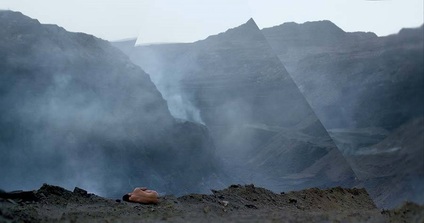 A documentary of striking resonance, Zhao Liang's Behemoth is a poetic and haunting portrait of modern day China, focusing on massive coal mine industry which fuels the countries consumption and growth. Behemoth is a film that certainly lives up to its name, exhibiting the sure scale of these mining observations, the weight they place on nature and the working class. This is a striking film from start to finish, with Behemoth completely telling its story through its aesthetic, juxtaposing the lush greenlands bristling with life, and that of the cold, desolate mining areas which are barren and lack any life outside of the coal miners. Some visuals are impressive just due to the fact that they are so literal and easy to express, one which comes to mind is a scene featuring a host of dumptrucks disposing of mining debris on the plain, with the composition bristling with sheep in the foreground, a not so subtle, but powerful visual of the taxing nature of humanity on the planet. Man's intrusion on nature is a major theme of Behemoth, as the film portrays these mining operations as almost monstrous -slowly crawling the countryside, leaving everything barren and dead in its wake. Behemoth is very Impressionistic, something which is rarely used to describe documentaries, with visuals which at times evoke imagery typically seen in post-apocalyptic narrative such as Mad Max, with the dust, dirty, and quiet ugliness of the mining landscape being a character in its own right. If it isn’t clear already, one of Behemoth’s strongest attributes is its ability to evoke a visceral reaction from its viewers, with carefully constructed cinematography that transports the viewer into the world of these miners, evoking the sense of claustrophobia, danger, and overall harshness of the world these men inhabit on a daily basis. While much of what Behemoth presents early on is grand, the film never loses its ability to maintain its intimacy, focusing on the toll these mining operations have on the workers. In one brief sequence, Zhao Liang simply documents the process these workers go through simply to clean themselves, revealing how the soot gets on nearly every crevice of the body, clinging on to the skin, with cleanliness itself being a time consuming practice. While the filmmaker chooses an intimate, observational approach that some may find tepid, one could argue that at its core Behemoth is about the unbridled consumption which Capitalism embraces, as the film explores the toll consumerism has on nature and the less fortunate, who work in poor conditions to support this human consumption known as consumerism. Told using narration that is poetic and profound, Behemoth is a film that never feels manipulative in its beautiful study of man vs. nature, capitalism, and even materialism, never attempting to manipulative, simply focusing on presenting a portrait of modern day China with striking vision. 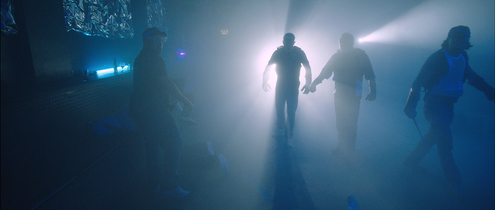 Gerard Johnson's Hyena is a stylish, gritty crime drama that tells the story of Michael, a London police officer, who along with his team, keeps tabs on the most violent drug traffickers in the city. Michael is a dirty police officer, who isn't above taking a cut from the criminals he is tasked with enforcing, but when Michael finds his under-the-table dealings threatened by recent changes both in the police force and on the streets, with the emerging Albanian and Turkish gangs seizing control of the drug trade, Michael is forced to shift his loyalties dramatically, content with doing whatever it takes, including selling out his former allies, in order to stay alive. Gerard Johnson's Hyena may be a familiar corrupt policeman narrative but thanks to skilled direction and a great sense of atmosphere, Hyena separates itself enough from other similar films, being a dark, brooding descent into the criminal underbelly of London. Shot with uncompromising pessimism, Hyena is a film that understands the importance of establishing the seedy world which its characters inhabit, with Gerard Johnson's using well crafted establishing shots which vary from standard still compositions to elaborate tracking shots, each of which soak up the seedy, busy streets which our corrupt police officer inhabits. One of the most interesting aspects of Hyena is its ability to evoke the tribalism which exists in this seedy world, where lines are drawn in the sand among these various factions of cops and criminals, where the status quo of shady-deals, buyouts, and protection money have breeded a frugal system of expectations, with the law itself being a pragmatic framework as to which these cops and robbers operate. Hyena doesn't shy away from the brutality of the world, rather it embraces it, intent on being a film that reveals the barbarianism and tribalism which runs rampant. One could argue that Hyena is a film about the conflict between tribalism and individualism, as the main protagonist, Michael, finds himself betraying his proverbial tribe in an effort to save his own skin, clashing against the codes which exist even within the cops/criminals paradigm, with his inherent selfishness and will survive supplanting any such criminal alliances. While Michael does find himself wrestling with his own morality as he falls deeper and deeper into this world, he isn't exactly an empathetic character, something which barely exists in this film at all. The only character who is empathetic in the entire film is Arianna, a female character, who is stuck in-between the corrupt cops and drug dealers of the London underbelly, physically and emotionally abused by both sides as they jockey for power. Featuring impressionistic lighting and heavy dose of handheld photography to bring this seedy world to life, Gerard Johnson's Hyena is an ultraviolet, brooding experience which exhibits the moral ambiguity, tribalism, and inherent selfishness which makes up the seedy London crime scene. 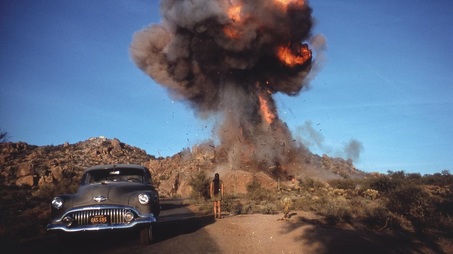 Michelangelo Antonioni's Zabriskie Point is a brazen indictment of 1960's American culture thats narrative ambitions are borderline inconsequential when considering Antonionio's ability to capture his larger thematic intentions almost entirely through aesthetic means. The narrative itself is centered around two aimless young adults in Daria, an anthropology student who is working with a property developer in Los Angeles, and Mark, a college student who spends most of his time attending protest rallies. After a cop is gunned down at a volatile protest, Mark is incorrectly identified as the shooter, which leads the young man to flee town in the quickiest way possible - by stealing a small, single-engined plane. Through circumstance Mark and Daria cross paths in the California desert, where they become intimate in the desolate desert of California where urbanism has yet to intrude. A poetic chronicle of counterculture America, Michelangelo Antonioni's Zabriskie Point is a heated take down of consumerism and capitalism, as the filmmaker beautifully juxtaposes the open and free spaces of the desolate desert with that of the tight, constricting space of urban Los Angeles. I'm not sure there has been a film that captures the crowded, impersonal cityscape of Los Angeles so well, as Antonioni's grand themes of human alienation and impersonalization are beautiful captured through Antonioni's documentation of capitalism and consumerism. Zabriskie Point documents a stranger's point of view of America, with the Italian filmmakers use of punch-in type compositions throughout effectively evoking the filmmaker's sense of curiosity about America. Antonioni's camera routinely wanders throughout the space, documenting the overabundance of advertisement billboards and corporate branding in every urban scene, these signs of consumerism and capitalism hanging over the landscape, being a symbolic representation of how consumerism crushes the individual in American society. When Mark and Daria connect in the desert, Antonioni switches up his aesthetic entirely, relying on an abundance of wide shots, opening up the film in a way that visually expresses the freedom felt by these two characters, each of which has escaped the closed confines of the city. The time Daria and Mark spend together in the desert is the happiest we see either of these characters throughout, as Antonioni expresses the solace these characters feel in this environment, one where they can back to their relationship with nature and what it truly is to be human. The finale of Zabriskie Point is a stunner, being the filmmaker's grand indictment on consumerism and materialism, as the film exhibits the slow-motion destruction of various materialistic comforts such as television or designer clothes while clashing guitars provide the music, a hypnotic and incendiary sequence that uses sound and image to express Antonioni's rage. Zabriskie Point's narrative is simply the least important or interesting aspect of the film, as what Michelangelo Antoioni has created is a powerful, moody examination of American capitalism's intruding urbanism, predicting the relentless expansion of living spaces into the far-reaching deserts and beyond 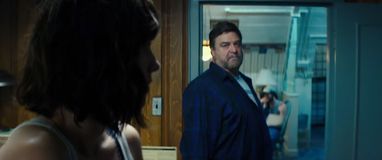 Dan Trachtenberg's 10 Cloverfield Lane is a tight, well-crafted, well-acted thriller that is bound to disappoint those viewers going in seeking a similar monster movie experience to the first film. In fact, the connection between Cloverfield & 10 Cloverfield Lane is marginal at best, with the only real relationship between these two films being an extravagant marketing ploy to entice those familiar with the Cloverfield brand. The prologue of this story is centered around Michelle, a young woman, who is running from a troubled relationship. We aren't given any details into why exactly she is running, but we know she is unhappy, leaving the big city and her boyfriend behind for greener pastures. While fleeing, she gets into a serious car accident, awakening in a secluded, bomb shelter. Sustaining injuries from the crash, she is now in the care of Howard, the owner of the bomb shelter, who claims that the outside world is now affected by widespread chemical attack with the shelter he himself built being the only safe haven on earth. Of course, Michelle is reluctant to accept Howard's seemingly brazen story, assuming the worst about Howard's intentions. It isn't until an attempted escape that Michelle realizes Howard is telling the truth about the chemical attacks, when she witnesses, first-hand, the potency of the terror lurking above ground. Dan Trachtenberg's 10 Cloverfield Lane has more in common with films like Misery or even Room, being a psychological thriller about a character in Michelle who awakens in an unknown environment, unable to fully trust those who inhabit it. The audience takes on Michelle's perspective, and much of what works in 10 Cloverfield Lane is the mystery and suspense centered around the backstory of Howard as a character, a man who while telling the truth about the chemical attacks, seems to have perverse intentions related specifically to Michelle. Played by John Goodman, Howard is a character whose intentions are ambiguous for much of the film's running time, with the veteran actor bringing a great sense of instability to the role. Howard is a character with a calm overall demeanor but underneath this surface lies a lot of volatility and anger. While set in a somewhat supernatural setting, 10 Cloverfield Lane doesn't really deal with the supernatural, instead focusing on the darkness of man. The only true connection between Cloverfield and 10 Cloverfiled Lane is that they are both about "monsters", or should I say the many forms which can define "monsters:, with this effort focusing on nothing supernatural for most of its running time, just a truly terrifying character in Howard, a man who clearly is suffering from some form of psychosis, which is revealed slowly and methodically as the film progresses. Besides the ending, which feels incredibly superfluous to the rest of the film, 10 Cloverfield Lane is a tense, tight psychological horror film, thats narrative has enough twists and turns to keep the viewer engaged from start to finish - just don't expect another bombastic, monster movie or you are bound to be disappointed. 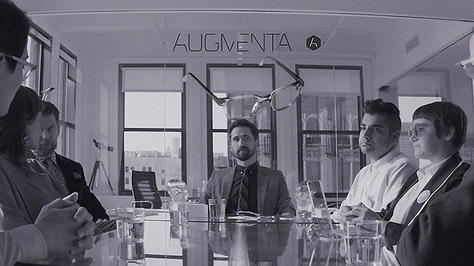 Taking place in a not-so-distant future, Benjamin Dickinson's Creative Control tells the story of David, an overworked, advertising executive who has been developing a campaign for "augmented reality" glasses, which his client and him believes can mimic reality to a degree not seen before in the virtual reality techspace. Popping Xanax like candy due to the stresses of work and pressures from feeling caged in by the relationship with his yoga instructor girlfriend, David begins experimenting with the "augmented reality glasses" which leads to him struggling to tell the difference between reality and the one he creates for himself. David envies the life of his best friend Wim, a chauvinistic fashion photographer, who spends most of his nights sleeping with various models, only to return home to Sophia, his beautiful girlfriend who David happens to work with in some capacity. After a one time kiss with Sophia, David begins to become entranced by this woman, using the glasses to design a reality with her that drives him over the edge, unable to separate fact from fiction. Creative COntrol is a relationship drama full of deceit masquerading as a science fiction film from a narrative perspective that takes awhile to gain momentum in the early going, relying on a sense of humor that is hit or miss and characterizations that never fully develop. Where the film shines is in the world it is able to create, delivering a clean, unique aesthetic that impressively evokes a futuristic feel on what I can only imagine is a rather small budget. One could certainly argue that the films thematic ideals are a little half-baked, but I'd be lying if I didn't admit I found some of the film's ideas creatively presented, even if they were never fully developed. One could argue that Creative Control is essential a parable for the toxic effects of technology, as David's life essentially goes spiraling out of control due to these "augmented reality" glasses. Personally I think the more interesting aspect of Creative Control is its commentary on capitalism or even more so corporatism. Creative Control does a wonderful job of juxtaposing the augmented reality David creates with the corporatism he is part of on a day-to-day-basis, with the film expressing how neither of them are truly real when it comes down to us as human beings, as materialism and monetary reward are merely created by man not nature. The screenplay ends up working pretty well from a comedic perspective, especially towards the back half, but I still wish Creative Control's characterizations could have been a little better realized, as the film's efforts felt more focused on its various themes and technical prowess than in the story of characters' struggling in the age of information, technology, and capitalism. 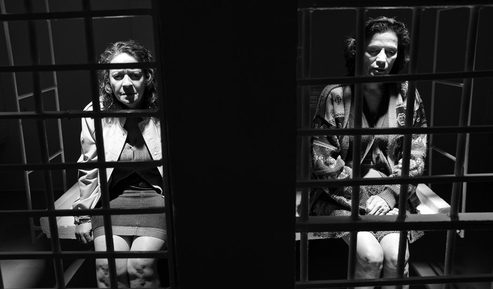 Arturo Ripstein's Bleak Street is certainly a film that lives up to its name, a stark exploration of the harsher aspects of life, the suffering which exists all over the world, focusing on characters who have been hardened by the unforgiving environment around them. Many viewers will have a hard time showing empathy towards any of the characters in this film, but I believe that the film makes a convincing argument that they are merely products of their harsh environment. Bleak Street is a film where the narrative becomes engrossing more as the film progresses, with Ripstein understanding the importance early on in defining these characters and the world in which they inhabit. Every character in this film lives a lowly, poverty existence, with the narrative focusing on two aging prostitutes who each have a difficult time finding work. One of the prostitutes has major problems at home, with her teenage daughter and a cross dressing, homosexual husband. The other struggles with loneliness having to be the caregiver, and not a particularly good one, to her incapacitated, elderly mother. These characters aren't what one would consider good people, but as the film's narrative progresses it becomes clear that they have been shaped by the harshness of their reality. Without going into details, these two prostitutes have an encounter with two twin midget wrestlers, which sends their lives spiraling into a even deeper hole. These twin brothers are followed through the film as well, low income wrestlers, one of them being an abusive husband to his wife, while they share an alcoholic mother. One of my favorite aspects of the film is its ability to show how such grating conditions breeds animosity and anger, with these characters developing an underlying brutality, with once again the film arguing that this is, at least in part, a bi-product of the conditions in which they live. The characters of Bleak Street do become sympathetic over time due to this constant struggle, as they are simply characters doing what is necessary to survive. Shot in stark black and white cinematography which certainly evokes the bleakness of its story, Bleak Street's camera artfully wanders around its environment with slow pans and tracking shots, a film with a powerful aesthetic which matches its grim story. Bleak Street is a tragedy, revealing how in this type of situation life becomes more of a burden than a blessing, slowing wearing down these characters til they have nothing left to give. Bleak Street is the type of film that is grim to the degree that I felt like I needed a shower after watching it, very offbeat and strangely effective. Towards the end of the film when things have really taken a turn for the worse, one of the prostitutes exclaims "All Things Pass", as she has essentially excepted that she will only find some sense of solace in death, whenever that day comes. 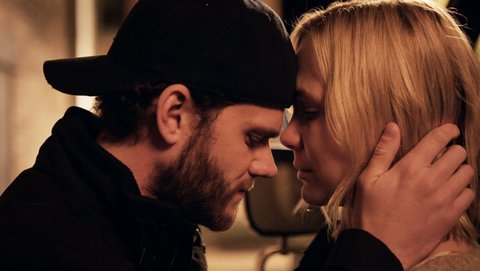 Justin Lerner's The Automatic Hate is the type of film that I'd recommend going into as blind a possible, being a film that is sure to be divisive given the rather taboo subject matter. The film is centered around David Green, a 20-something man, who faces resentment from his father due to his culinary pursuits, a career which makes his psychology degree from Yale essentially worthless. David's relationship with his current girlfriend, Cassie, is rocky at best, and when a young, beautiful woman named Alexis shows up at his doorstep, it certainly doesn't help David's current situation. Alexis claims to be David's cousin, and after some digging on his part, David discovers that she is telling the truth, learning that their is an entire side of his family kept secret from him his entire life. I really don't want to go into any more details, for sake of spoilers, but lets just say that The Automatic Hate is one of the more risque, intriguing, and singular American indie films I've seen in recent memory. This is a unique narrative from a young filmmaker who isn't afraid to touch on more risque ideas, and The Automatic Hate is very engaging from the beginning, being a mystery film which follows David as he tries to comprehend exactly why his father hid the fact that he had an uncle from him. This secret hangs over much of the film's running time, keeping the audience intrigued and curious, much like David, as to what the hell is going on. That being said, I'd be lying if I didn't admit that I saw the reveal coming from a mile away, due to a few too obvious hints early in the film where David's father gives a lecture on Nature vs. Nurture and human behavior in general, but I'd argue the film's unique subject matter kept me engaged, and a little squemish, from start to finish anyway. Thematically, The Automatic Hate is really a story of our lack of free will, how we are not as independent as we think we are, shaped by heredity and environment. David's plight ends up mirroring his uncles in a lot of ways, and while I don't necessarily agree with some of the film's principles about free will, it's a fascinating, and ballsy experiment. While i did find Justin Lerner's The Automatic Hate a tad silly in sections due to the aforementioned thematic ideals, I've always been a fan of films that challenge the constructs of societies deemed morality, and through the story of David, The Automatic Hate certainly achieves that.  A singular, cinematic experience even in the realm of abstract experimental cinema, Isiah Medina's 88:88 is a incendiary collage of image and sound which confronts poverty and social injustice. Certainly challenging and abstract at first, 88:88 interweaves the filmmakers family and friends with audio & visual disunity, offering up a film that isn't simply impressionistic but transfixing. This is radical cinema that is challenging, opaque, yet intoxicating, as 88:88 evokes a great sense of pain, loneliness, and isolation as it explores humanity that finds itself at the bottom of the food chain, exhibiting the feelings and emotions of those who have nothing, no home and no worth, in a society that defines success by materialistic ideals. The film is equally universal and deeply personal, as it attempts to get to the very core of these types of social issues, attacking them not only from a moral perspective but also ambitiously from a psychological perspective which at least for me, evoked an even more visceral reaction. The film has absolutely no narrative, but it does have some variation of story, as these various family members and friends each struggle in the world around them. There are aspects of the film that feel very dream-like in that regard, evoking a sense of memory, capturing how emotion typically shape these experiences. There is some dialogue but it really serves to supplement the visual aesthetic, not the other way around, as the images themselves do much of the heavy lifting when it comes to expressing the filmmakers' ideals. There is little real context to these character's plight but that is exactly what makes 88:88 so resonant, as it's a film that evokes the feelings, emotions, and psychology of human suffering, tapping into the core of pain and attempting to break it down and comprehend it. There is a lot of striking imagery throughout 88:88, but one particularly sequence really stood out - a a scene in which a character stands handcuffed in the middle of downtown Winnipeg (I think). The sequence is shot with a low angle, as Isiah Medina uses this imagery to evoke many of the film's larger ideals, visually expressing the boxed in, trapped state of many less fortunate individuals in society through the handcuffs and composition, contrasting their plight with the paramount successes of others, who tower over them, like the skyscrapers up above. Isiah Medina's 88:88 is obviously not a film for everyone, but for those interested in more challenging, experimental fare, 88:88 is a truly impressive debut that is sure to evoke a host of reactions from those willing to give it a shot. 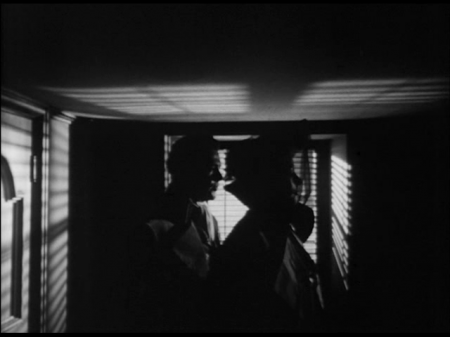 Also known by the title, The Black Book, Reign of Terror is an audacious effort by director Anthony Mann, which sees the filmmaker turning his attention to the French Revolution. Bringing his noir sensibilities to the story of Robespierre, the Revolutionary leader who notoriously plunged France into a form of barbarianism with his nearly nightly executions, Reign of Terror is centered around Charles D'aubigny, a man who has been engaged by a group of political moderates who are intent on overthrowing Robespierre. You see, Robespierre's desire to is to be the new dictator of France, but this group of moderates believe the discovery of a little black book is the key to overthrowing this power-hungry man. The book contains a death list of those marked by Robespierre for the guillotine, people who he believes stand in his way of emerging as the country's dictator, and the mere public acknowledgement of such a book would without question leave Robespierre in political ruin and most likely death. Anthony Mann's The Black Book is a gritty, low-budget film told with an impressive amount of vitality from start to finish, with Mann creating an experience full of tension, intrigue, and darkness. The film plays very much like a detective story for much of its running time, with Charles D'aubigny being a character pulled between the two sides of the political conflict, unable to decipher who can be trusted in this time of deep-seeded political unrest. The whole film for that matter has this great sense of unrest, mystery, and instability, with Mann drenching nearly every scene in dark shadows and impressionistic lighting that perfectly create a sense of tension and uncertainty, even delivering a voyeuristic quality. Apparently Reign of Terror was a very cheap production but Mann seems to use it to his advantage, with the overuse of shadows conveying a sense of darkness which hangs over France as a country, under they tyrannical reign of Robespierre. Reign of Terror is a great example of how ingenuity can lead to great artistic achievement, as Mann's noir-drenched photography not only disguised the cheapness of the sets but evoke a sense of darkness, perfectly capturing the feeling of this time in French history. Typical of Anthony Mann, Reign of Terror doesn't hold back in capturing this dark era in history, exhibiting acts of violence such as torture, murder, and executions that feel quite intense and graphic, given the time period in which the film was made. I'm not sure I've ever seen a film from the 1940s have blood splatter, but during the climatic sequence when Robespierre finds himself exposed and left at the mercy of the angry mob, Mann has his camera capture the blood splatter from a gunshot drench the face of Robespierre, a truly visceral moment in the film. With an emphasis on the brutality of the time period, Anthony Mann's Reign of Terror paints a portrait of a nation up for grabs, delivering a vivid and fascinating film in the legendary director's canon that truly captures how important ingenuity can be in the artistic process of filmmaking |
AuthorLove of all things cinema brought me here. Archives
June 2023
|
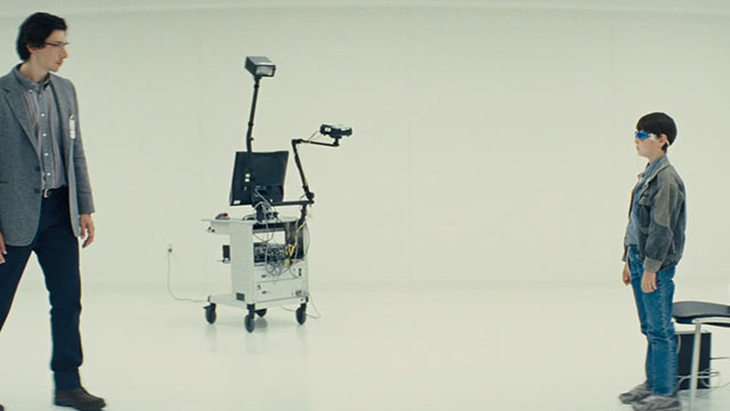
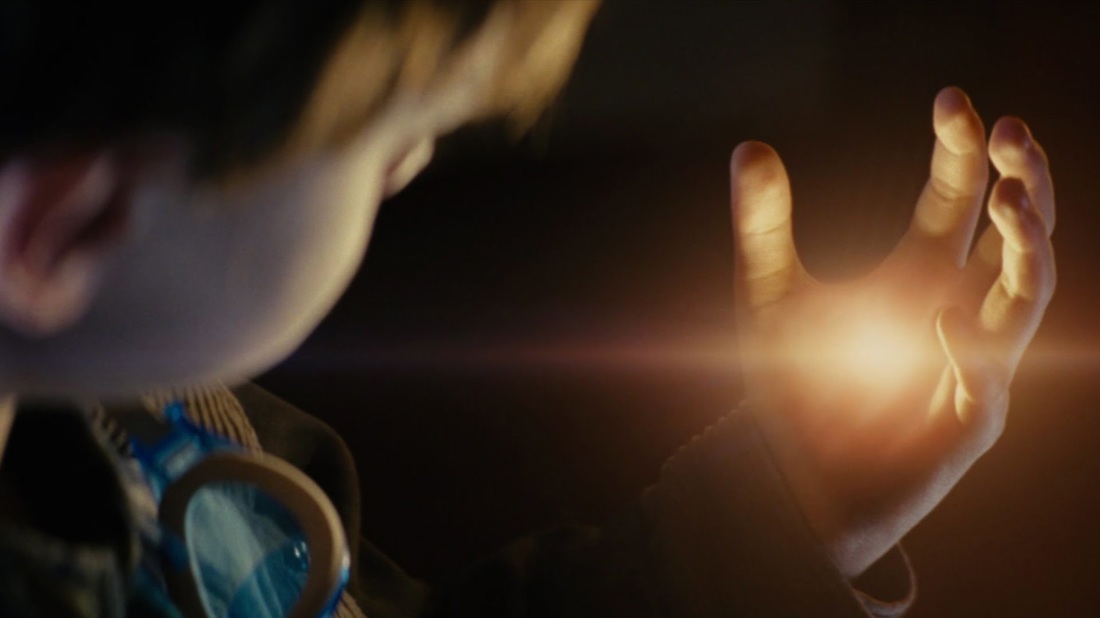
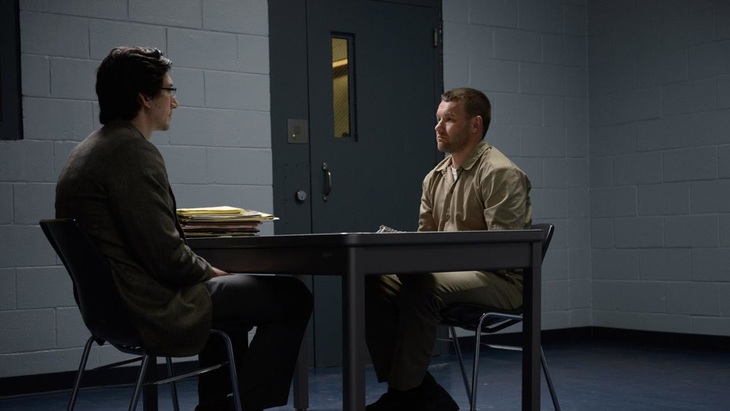
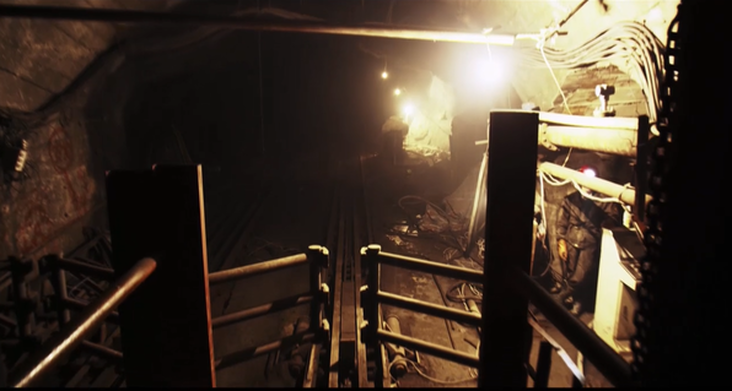
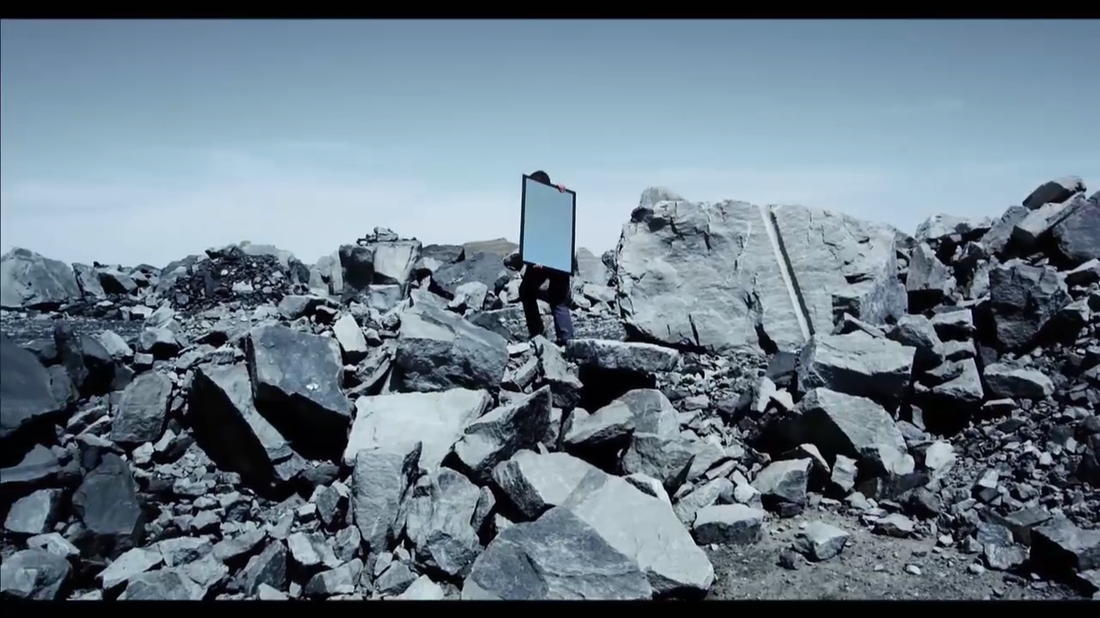
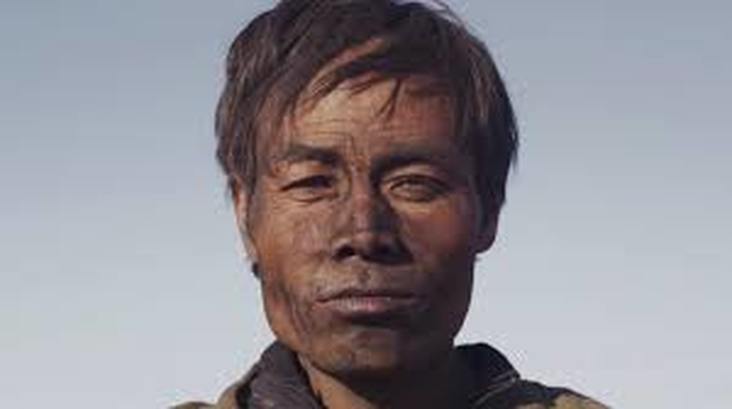
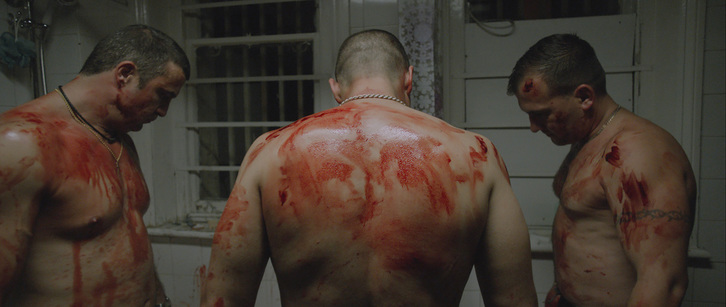
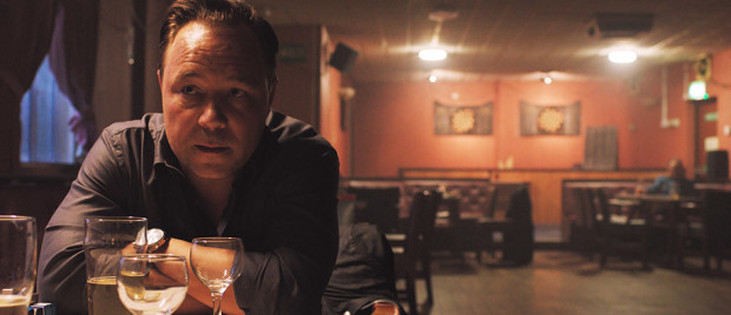
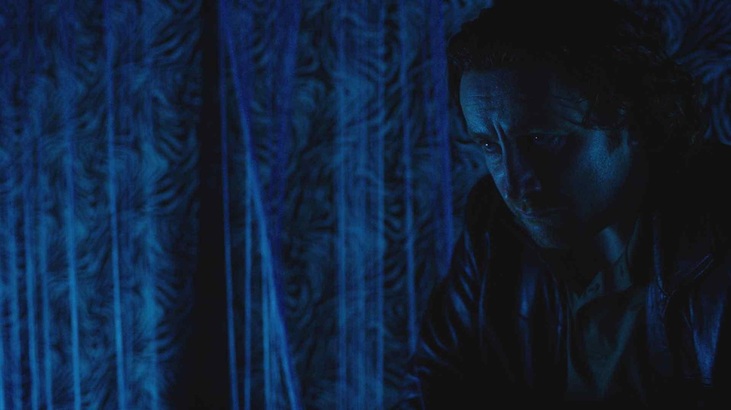
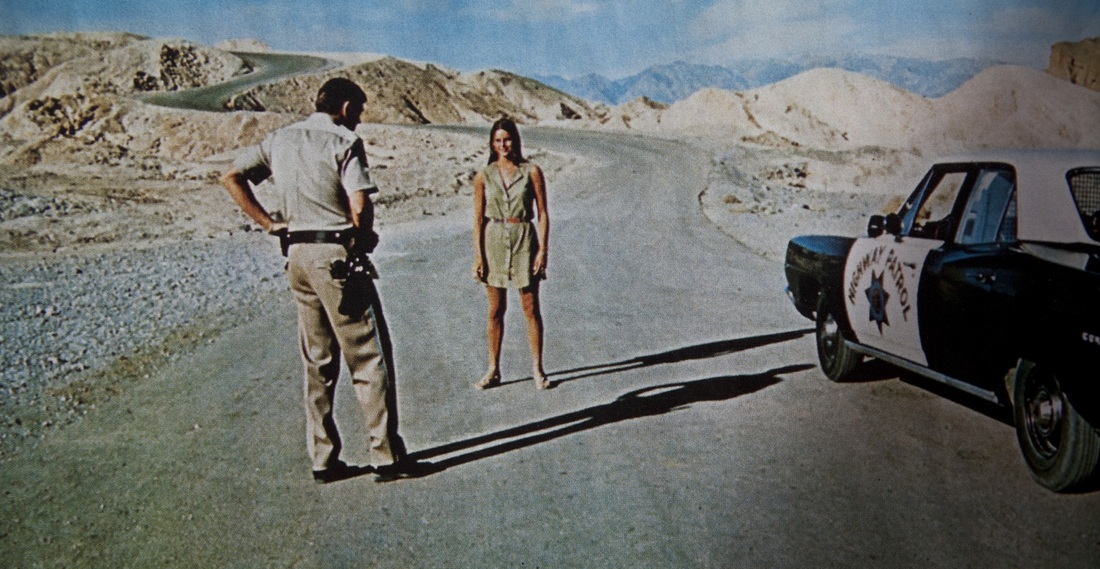
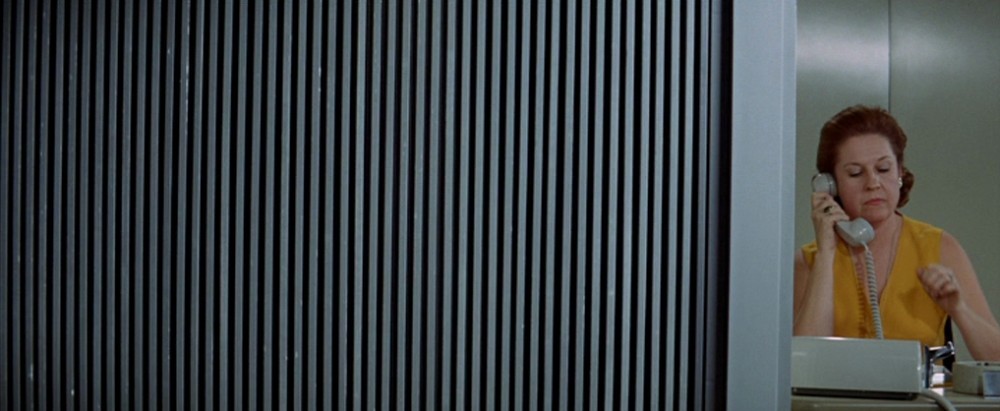
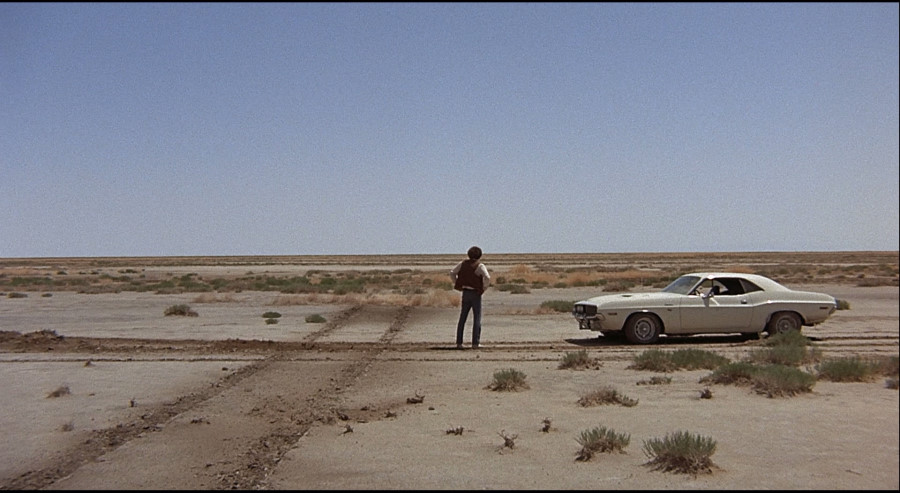
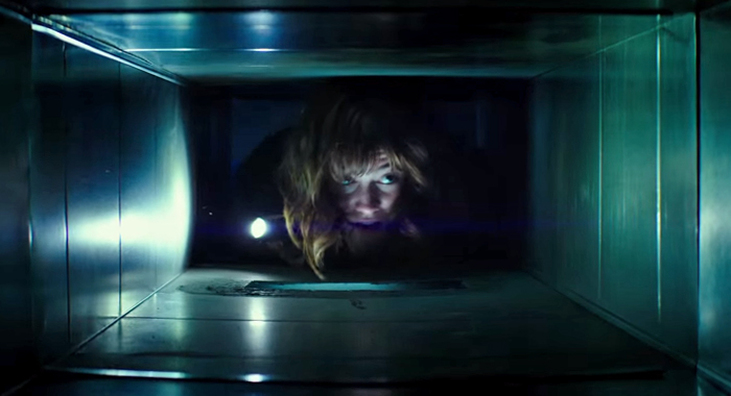
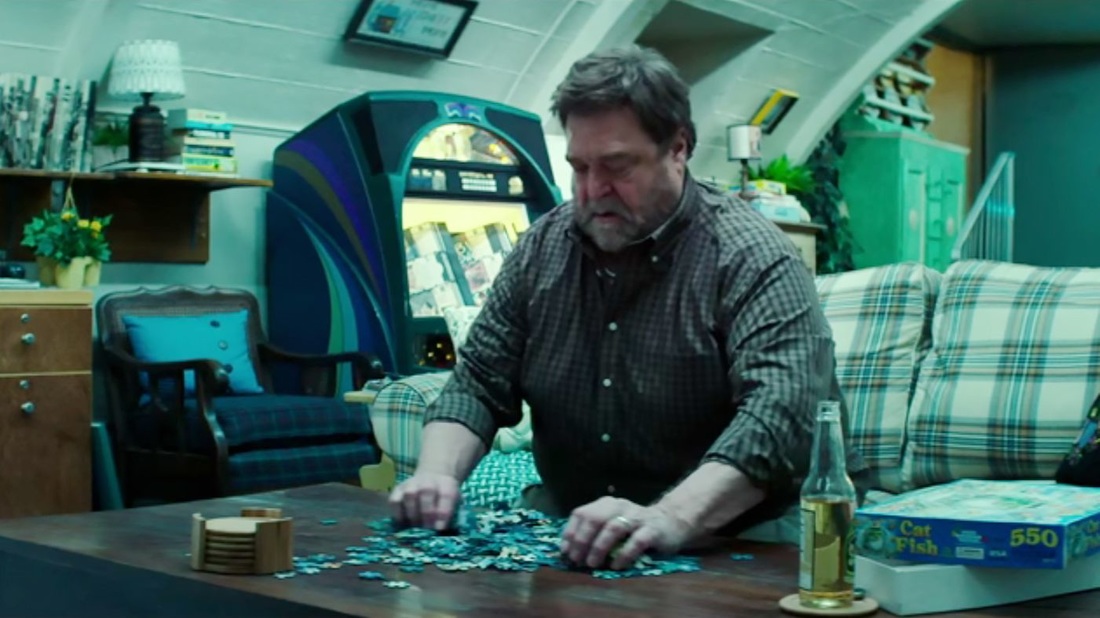
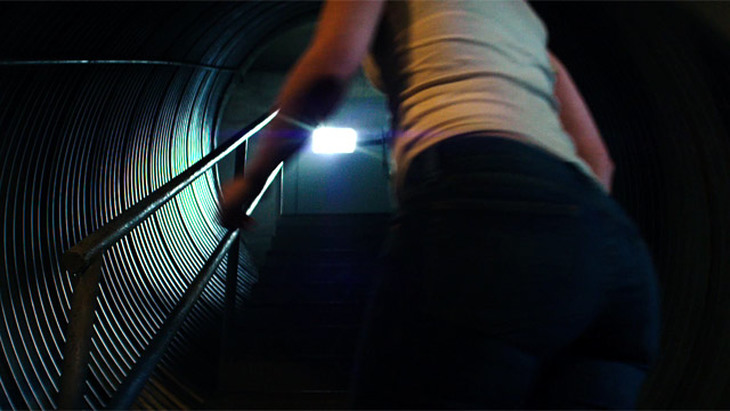
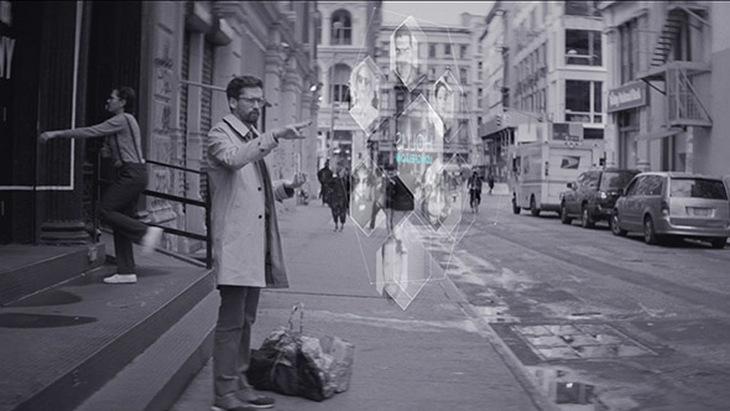
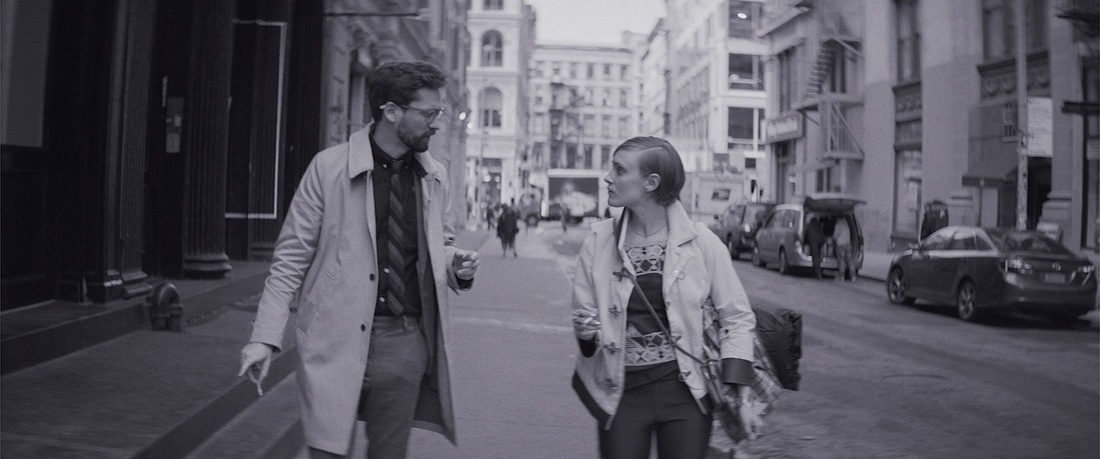
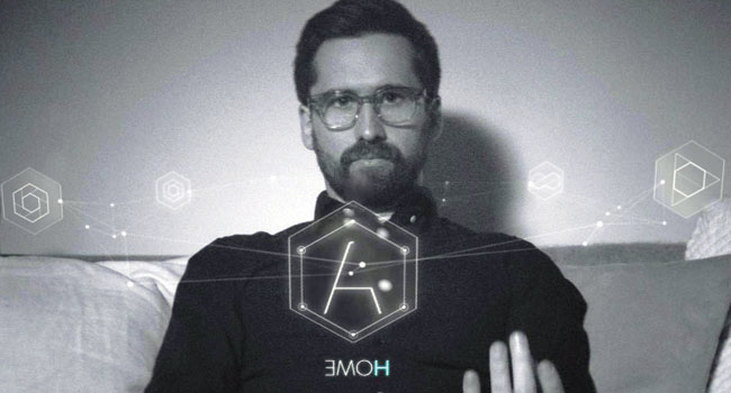
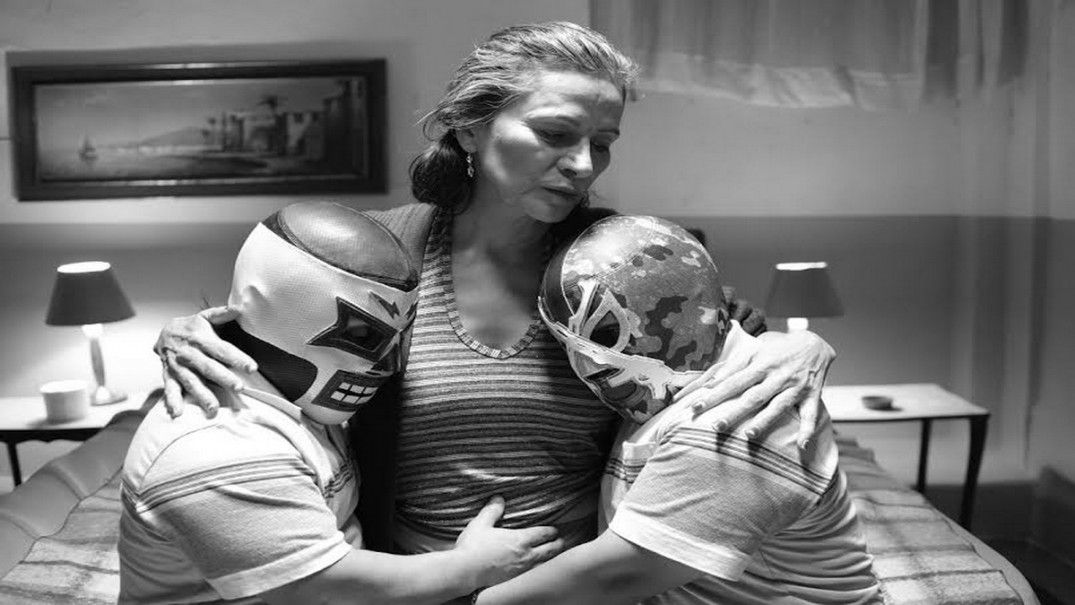
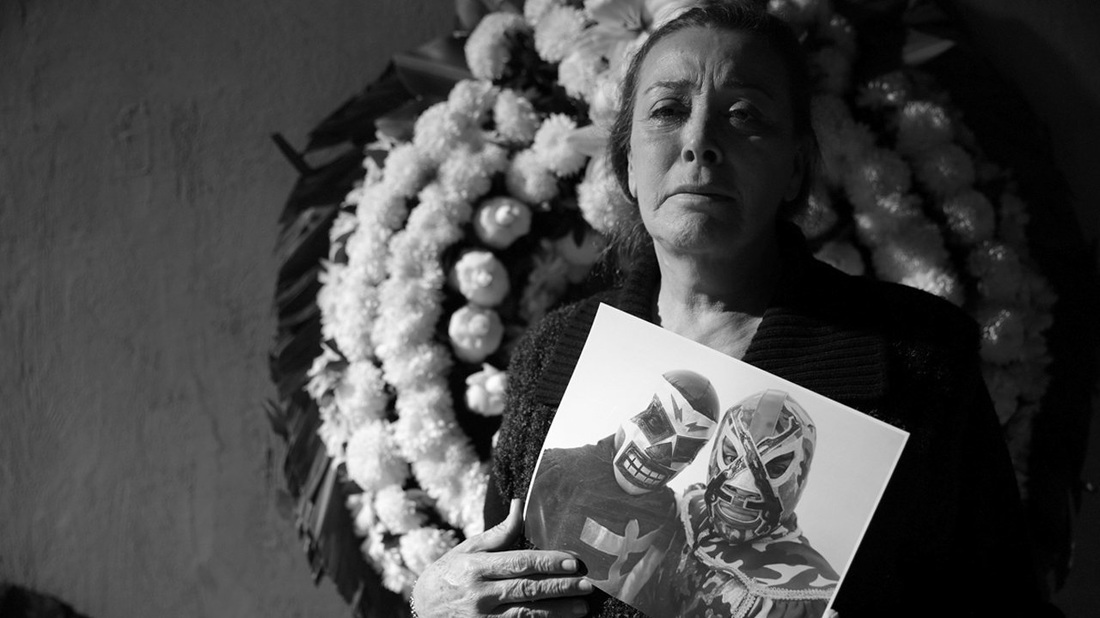
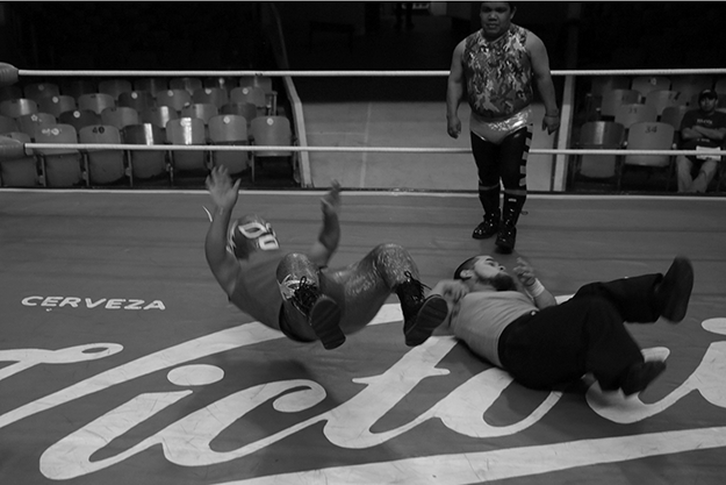
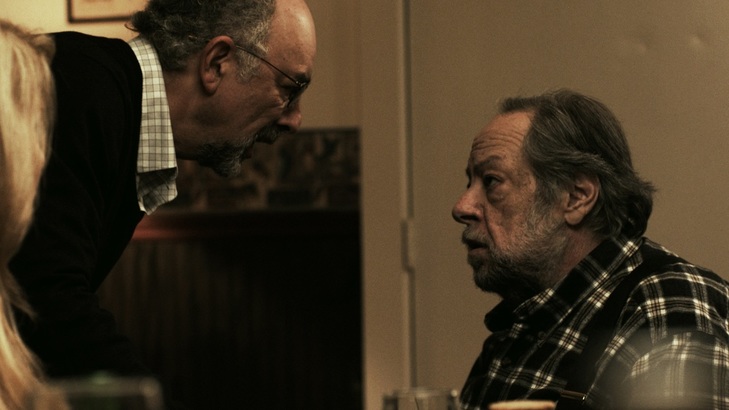
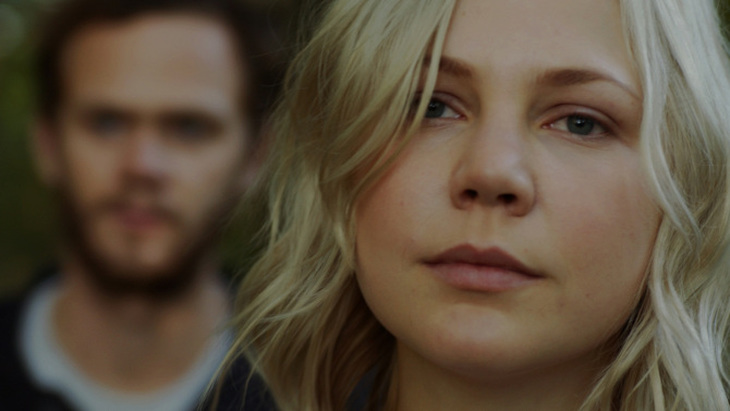
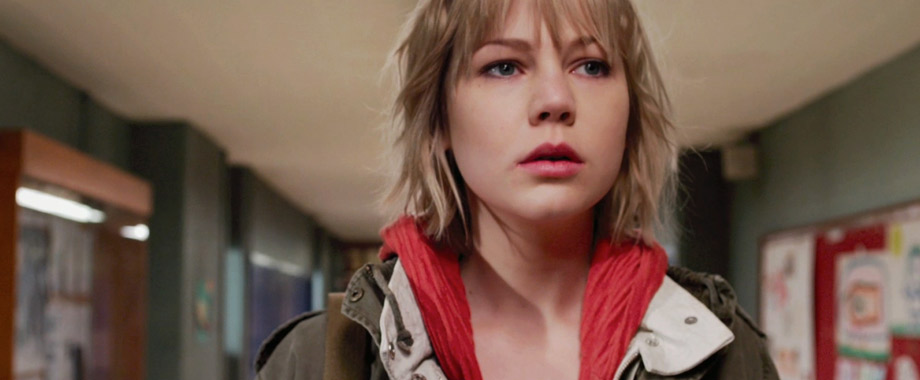
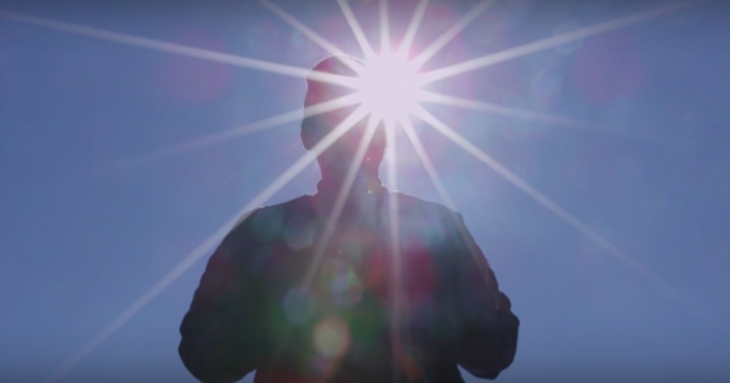
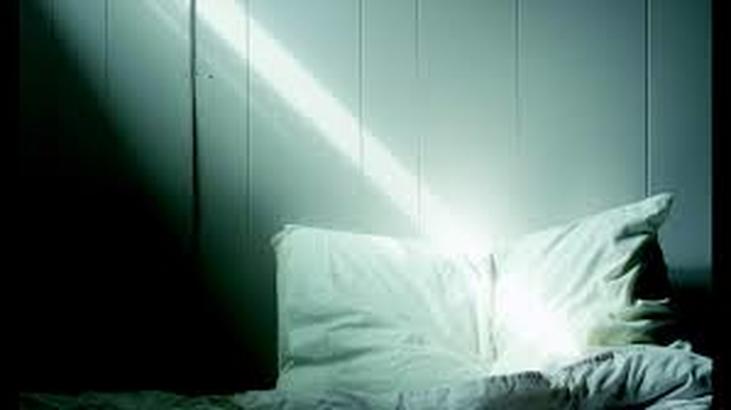
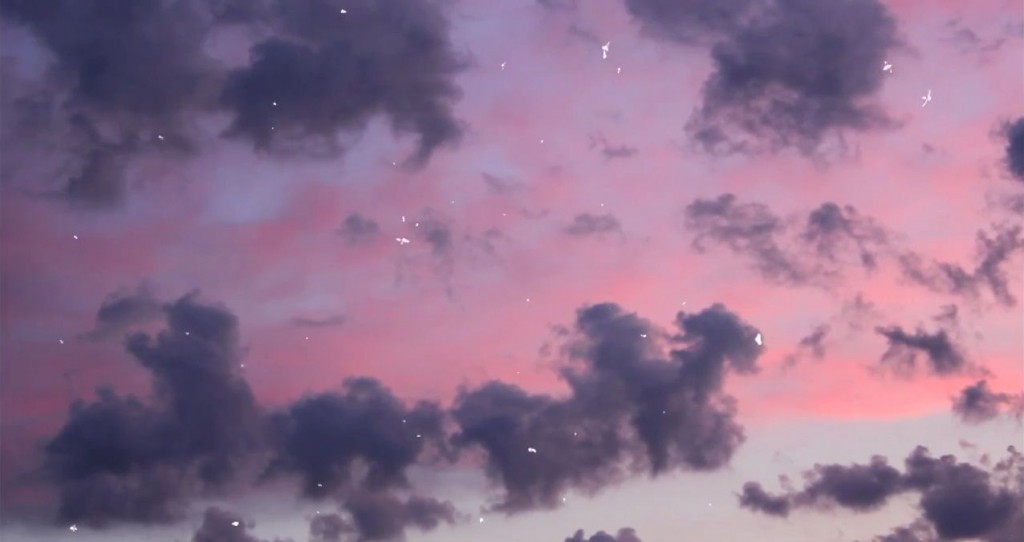
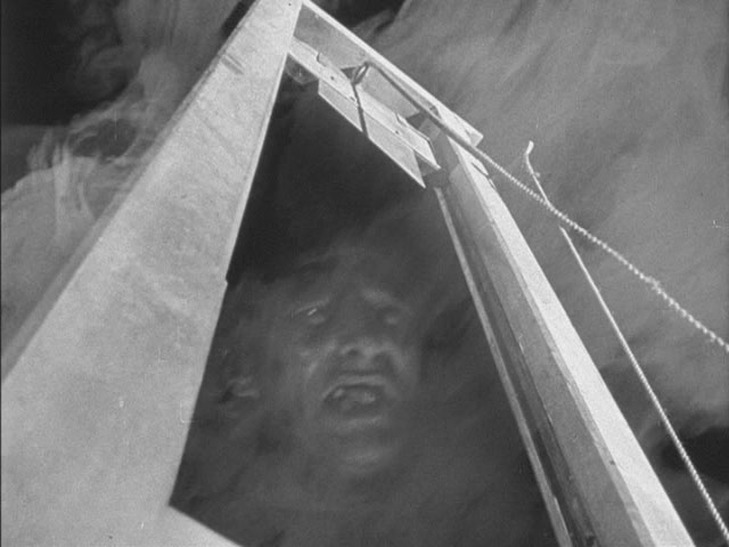
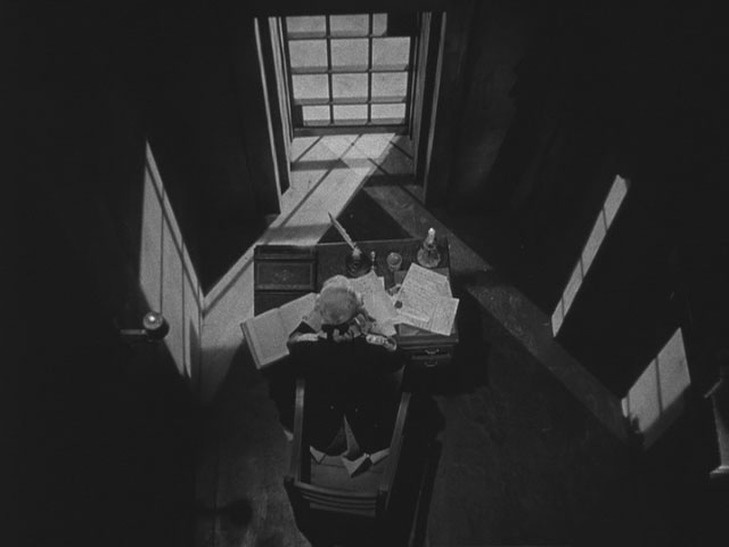
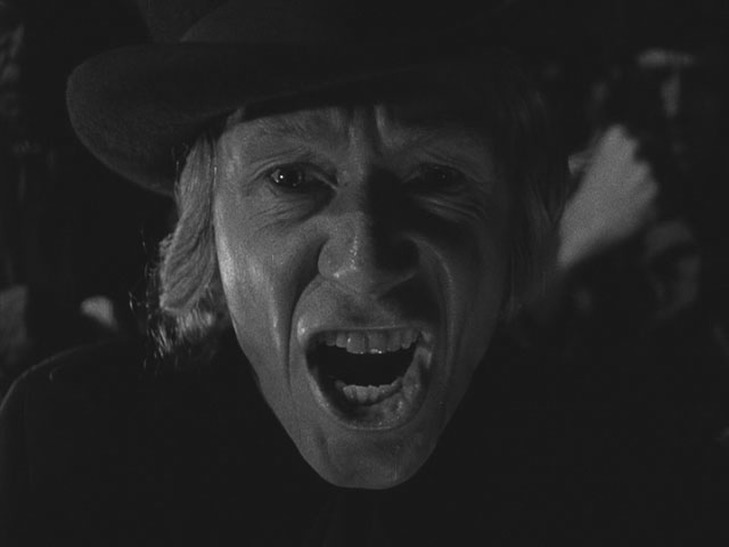
 RSS Feed
RSS Feed
